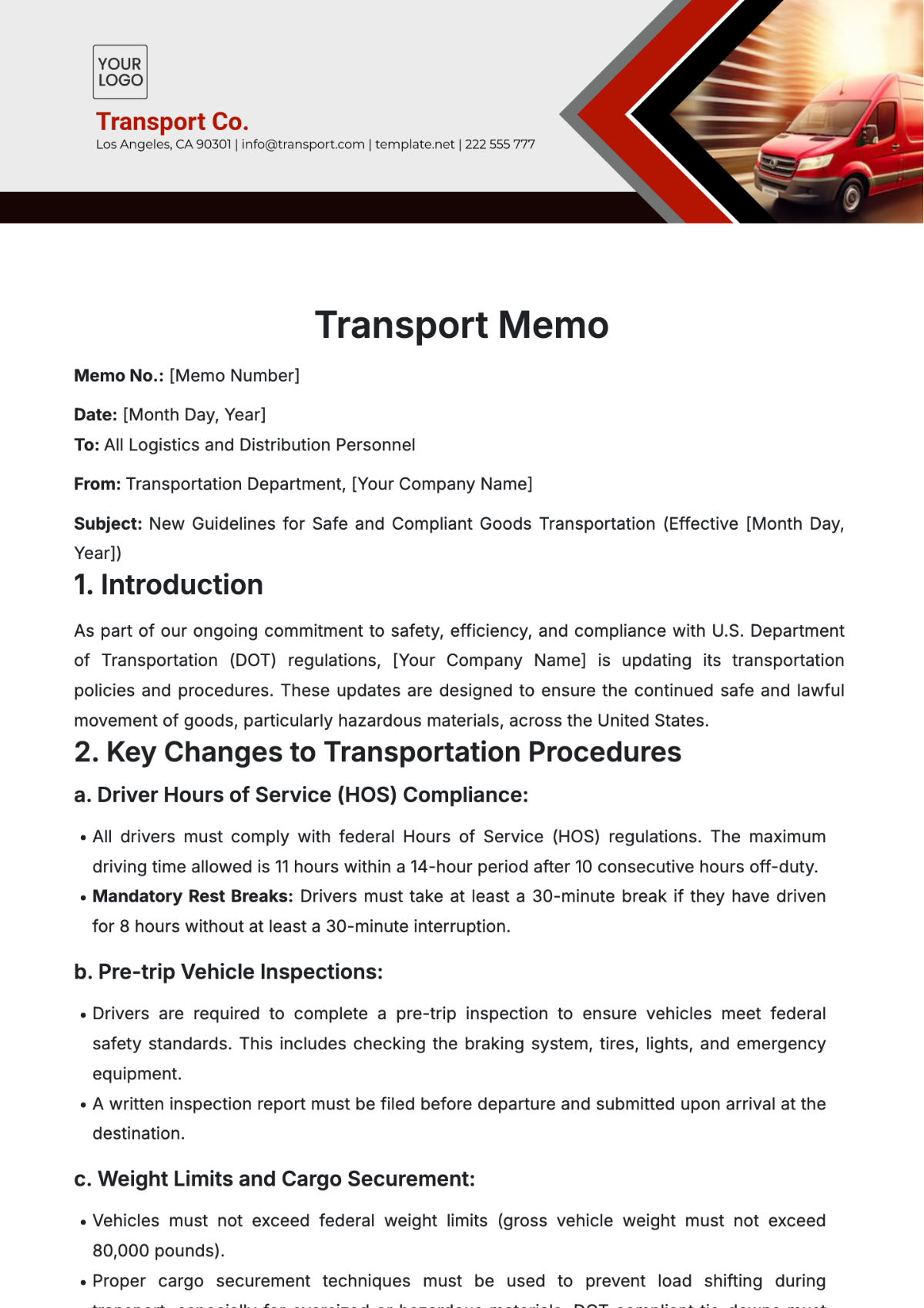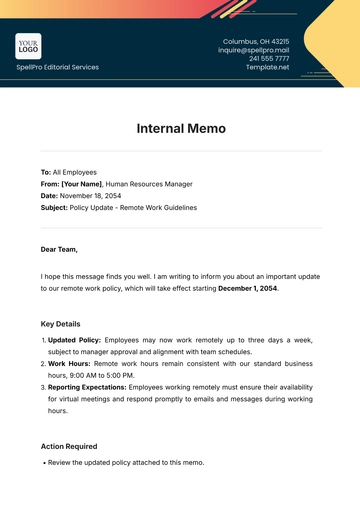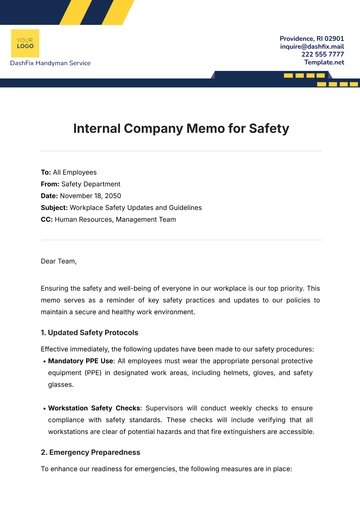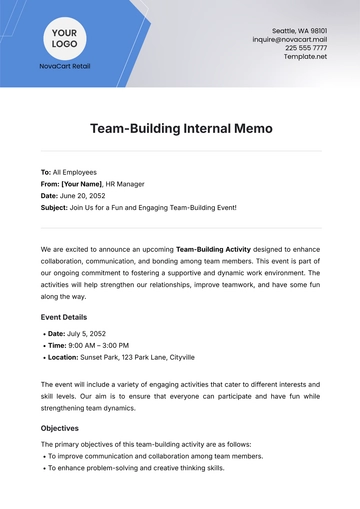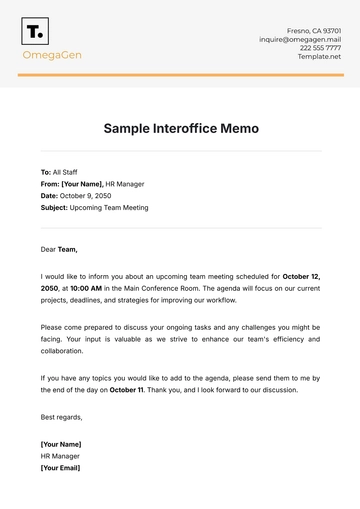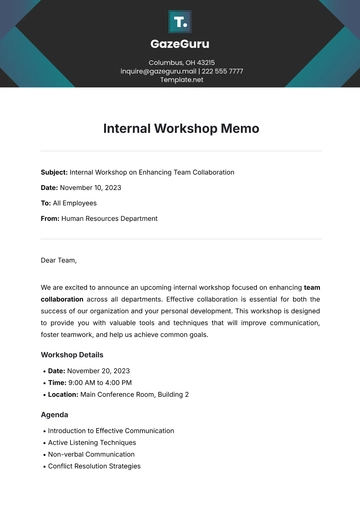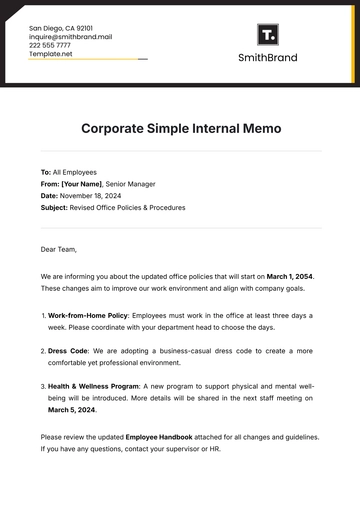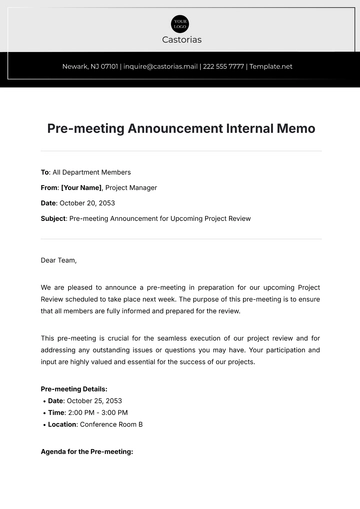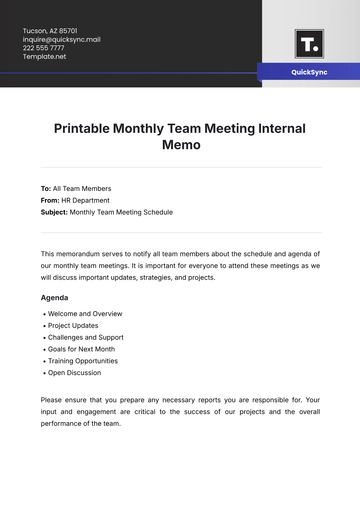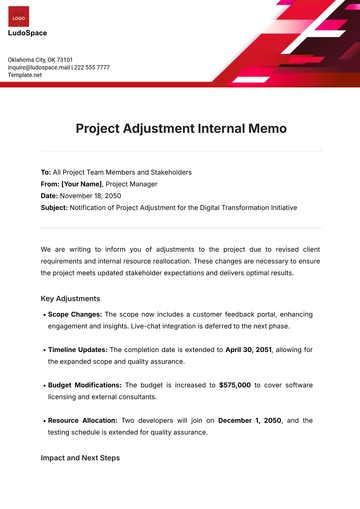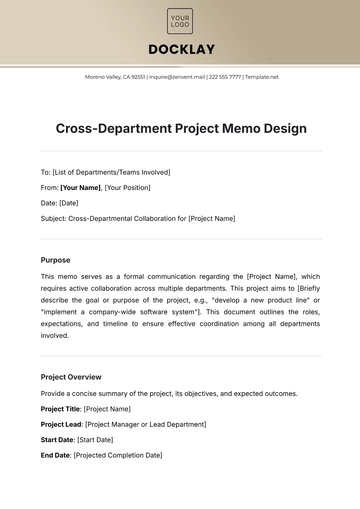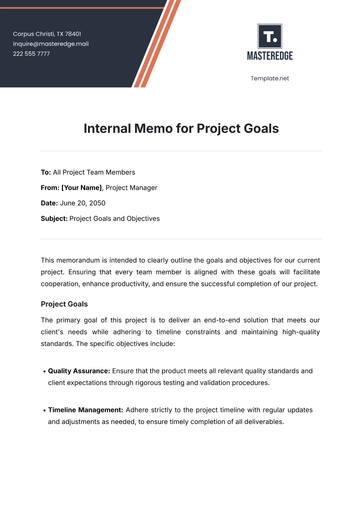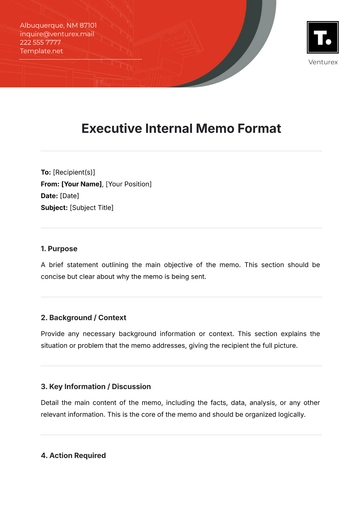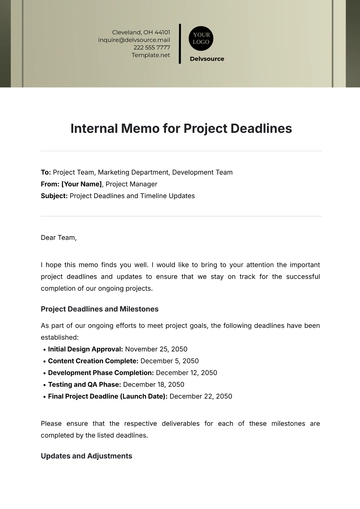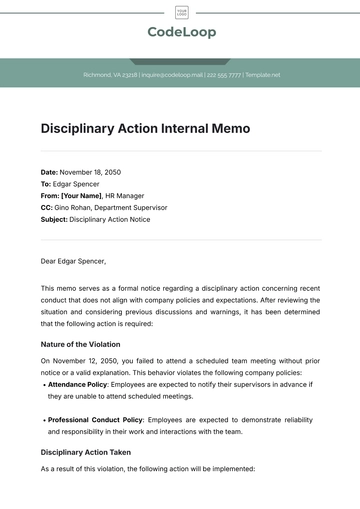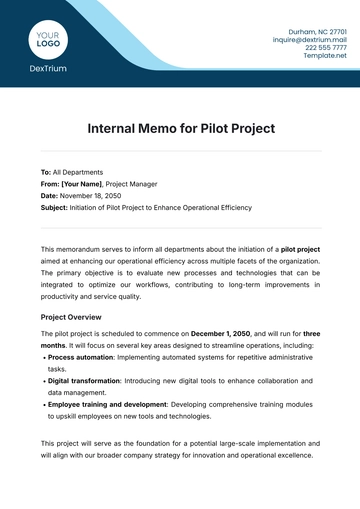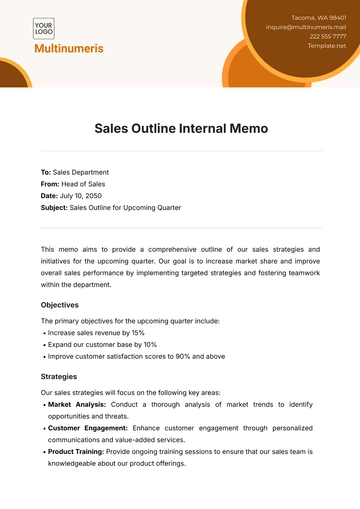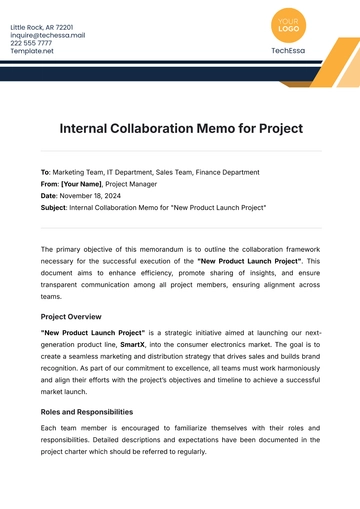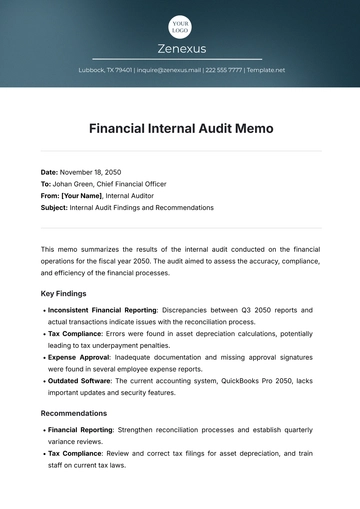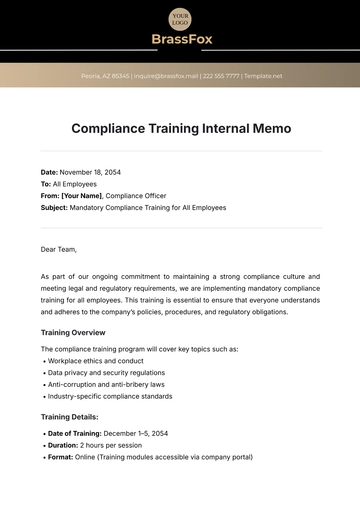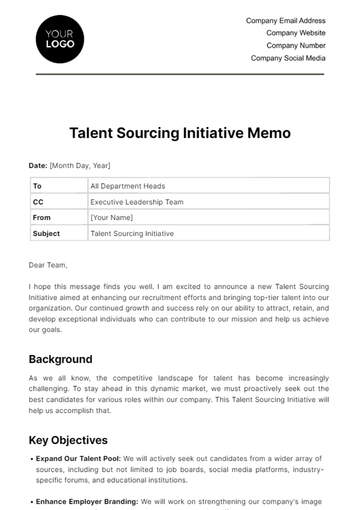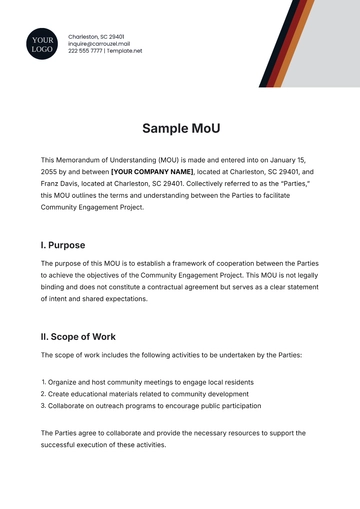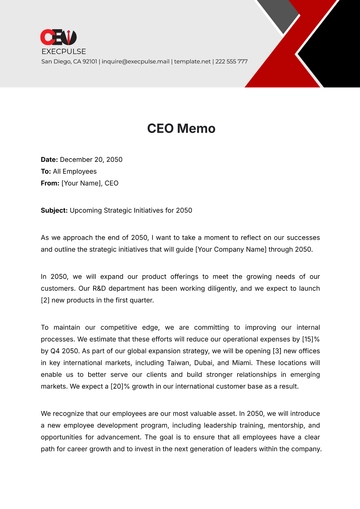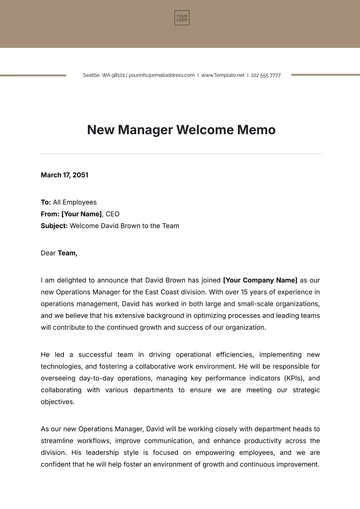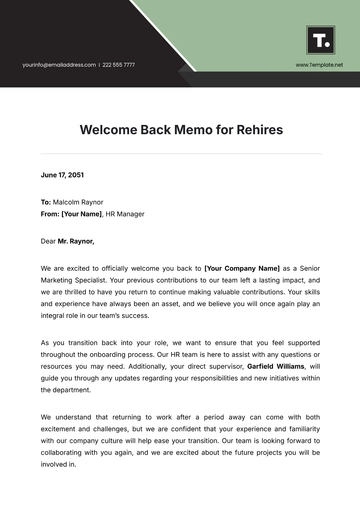Transport Memo
Memo No.: [Memo Number]
Date: [Month Day, Year]
To: All Logistics and Distribution Personnel
From: Transportation Department, [Your Company Name]
Subject: New Guidelines for Safe and Compliant Goods Transportation (Effective [Month Day, Year])
1. Introduction
As part of our ongoing commitment to safety, efficiency, and compliance with U.S. Department of Transportation (DOT) regulations, [Your Company Name] is updating its transportation policies and procedures. These updates are designed to ensure the continued safe and lawful movement of goods, particularly hazardous materials, across the United States.
2. Key Changes to Transportation Procedures
a. Driver Hours of Service (HOS) Compliance:
All drivers must comply with federal Hours of Service (HOS) regulations. The maximum driving time allowed is 11 hours within a 14-hour period after 10 consecutive hours off-duty.
Mandatory Rest Breaks: Drivers must take at least a 30-minute break if they have driven for 8 hours without at least a 30-minute interruption.
b. Pre-trip Vehicle Inspections:
Drivers are required to complete a pre-trip inspection to ensure vehicles meet federal safety standards. This includes checking the braking system, tires, lights, and emergency equipment.
A written inspection report must be filed before departure and submitted upon arrival at the destination.
c. Weight Limits and Cargo Securement:
Vehicles must not exceed federal weight limits (gross vehicle weight must not exceed 80,000 pounds).
Proper cargo securement techniques must be used to prevent load shifting during transport, especially for oversized or hazardous materials. DOT-compliant tie-downs must be used, and securement devices must be regularly inspected.
3. Hazardous Materials (Hazmat) Transportation
a. Proper Documentation:
Every shipment of hazardous materials must be accompanied by a shipping paper that includes the proper description, classification, and emergency response information as required by the Hazardous Materials Transportation Act (HMTA).
b. Labeling and Placarding:
c. Hazardous Materials Training:
All personnel involved in the handling and transportation of hazardous materials must complete mandatory Hazmat training by [Month Day, Year], as per the Hazmat Employee Training Requirements (49 CFR Part 172 Subpart H).
4. Accident and Incident Reporting
In the event of a vehicle accident or hazardous material spill, drivers must immediately notify dispatch and follow these steps:
Call 911 if there is an emergency involving injuries, hazardous material spills, or fire.
Contact the National Response Center (NRC) at 1-800-424-8802 if a reportable quantity of hazardous materials is released.
Complete the company’s Accident Report Form within 24 hours of the incident.
5. New Technology Implementation
To further improve safety, [Your Company Name] is rolling out electronic logging devices (ELDs) for all drivers starting [Month Day, Year]. This technology will:
Track driving hours and ensure compliance with HOS rules.
Record vehicle location and status in real-time.
Streamline record-keeping for inspections and fuel receipts.
6. Conclusion
It is crucial that all logistics and distribution personnel familiarize themselves with these updates. Non-compliance with federal transportation laws can result in severe penalties, including fines, driver disqualification, and potential loss of [Your Company Name]’s operating authority.
Please ensure you fully understand these new policies and direct any questions to the Transportation Department at [Your Company Number] or via email at [Your Company Email].
Thank you for your attention and commitment to safe and compliant transportation.

[Your Name]
Transportation Manager
[Your Company Name]
[Your Company Address]
[Your Company Website]
Transport Templates @ Template.net
